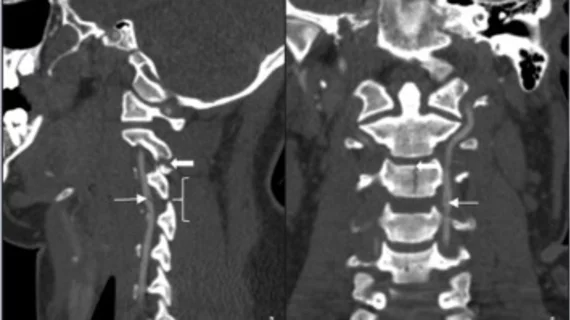New research discourages use of advanced vascular imaging in trauma patients
Authors of a new study published in Clinical Radiology are discouraging the routine use of advanced cerebrovascular imaging on major trauma patients [1].
The experts argue that the overall incidence of blunt cerebrovascular injury is very low and that symptomatic injuries in these cases are even lower.
These findings are the result of research based on cases that occurred at Salford Royal Hospital in the United Kingdom from 2015 to 2020. On average, the hospital sees more than 1,000 major trauma patients per year. While experts from the hospital maintain that assessing for cerebrovascular injuries is of utmost importance, routinely sending major trauma (MT) patients for advanced cerebrovascular CT (typically computed tomography angiography) imaging is not part of the institution’s protocol.
“With the potential mortality and morbidity consequences of cerebrovascular injuries, clinically significant injuries must not be missed. It is also necessary not to overburden already overwhelmed radiology departments with unnecessary and potentially low-yield imaging requests,” corresponding author R. Saqib, of the Department of Neuroradiology at Salford Royal Hospital, and colleagues explained.
So, exactly how low-yield are these imaging requests?
Of the 6,251 MT cases analyzed for this study, 250 underwent cerebrovascular imaging. Of those patients, blunt cerebrovascular injury was detected in just .6% of cases and symptomatic vascular injuries occurred in just .03%.
Over the five-year period, CTA was deemed necessary in just 4% of MT patients based on clinical and initial trauma radiological findings.
“This suggests that cerebrovascular imaging is only rarely required for MT patients and is not indicated routinely,” the authors noted.
Although the authors affirm that routinely sending MT patients for advanced cerebrovascular imaging is typically not warranted, they acknowledged that clinicians must strike a balance between “over-imaging” and risking missed diagnoses. They suggested that considerations should instead be determined on a case-by-case basis.
The study abstract is available in Clinical Radiology.

